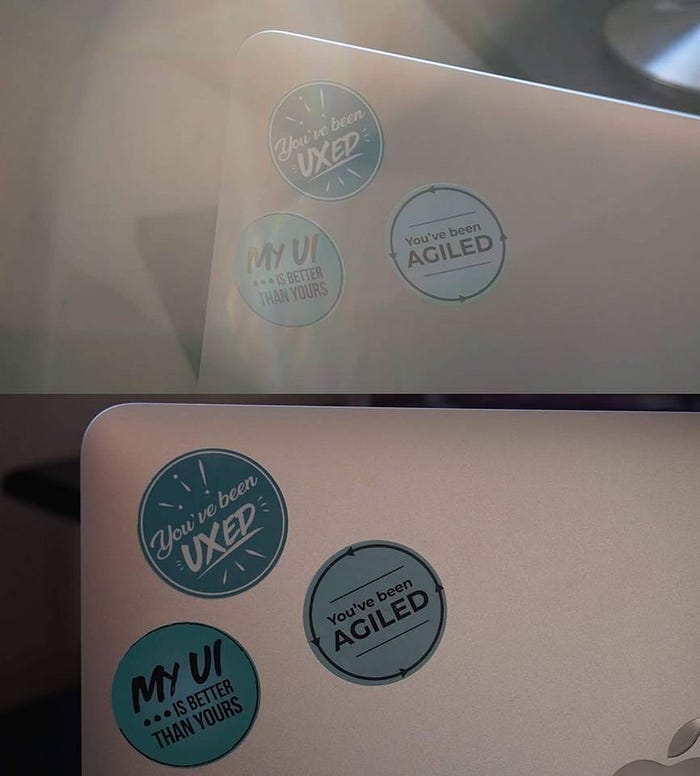UX and Agile don’t work together — right?
Every UXer that has ever struggled working in an agile environment has a different approach or workaround to accomplish their goal, whether for the user, the company or team. Does that truly mean that a UXer has an agile mentality?

Is UX needed in Agile?
Agile goals are established in order to produce working software quickly while emphasizing collaboration and communication, over documentation. Hence, flexibility is essential. In an agile environment, UX helps to define the user’s needs as well as conduct user evaluations. In the original concept of Agile, there was no clear role defined for UX/UI. Under this concept, developers are the ones responsible for the UI. However, creating the UI of an application without having an understanding of the user’s needs can result in an inferior user experience.
When should UX be involved in Agile?
The struggle is to fit the UX “process” (research, ideation, prototyping, user testing, and iteration) into sprints, which in many organizations, typically last two to three weeks. To overcome struggles, UX designers will typically work a sprint ahead of the development teams. The problem with this is that development teams might expect the designs to be completed by the time their sprint begins. This would cause those teams to view UX as a roadblock, even thought it might not be feasible for designs to be completed within a week.
UX should be included in a project as early as the ideation phase and involved through the project’s life cycle, including after launch. Research is essential at all times.
The ideation or discovery phase will help define the problem and bring together different teams’ perspectives into a vision.

UX should work in close cooperation with the product team and the stakeholders from the onset of the project when requirements are defined and the roadmap is created. If product owners define requirements without UX research (which essentially means coming up with a solution), it becomes difficult for the UXers to come up with relevant research information. This also puts at risk, UX becoming a roadblock for developers when the team starts pulling work from the backlog for the following sprint.
It can be tempting to do all your research at the start.
It’s OK to not have all the research answers in the beginning. And to be frank with you, it’s not even realistic. You can’t know everything about something. And the more you know something, the more you need to learn. Break down the research into smaller pieces and time-box it wisely. Use what you learn to know what you need to research next.
UX is not meant to work against anyone. It’s a cross functional team that can make the business succeed by maintaining the focus on the user.
With this in mind, if product owners and developers were to involve UX designers earlier in the process (before asking for more and more features to be implemented), UXers would will collaborate more instead of pushing back. Plus, your users will be happier. Much happier.
Love & Hate Relationship Between Agile and UX
After talking to a few UXers, there’s obviously not a perfect recipe for how UX should fit into the Agile “process”.
Agile is not a process, it’s a healthy mentality to have when you produce software.
I talked to people that were part of centralized and decentralized teams. A centralized team would have daily standups and also attend backlog refinements when they are involved in a project with a development team. When the value of UX in Agile is fully understood, UXers can become part of a decentralized team supporting the product owner dedicated to that team, the QA analysts and developers. Keep in mind, you need to do what works for you.
Leadership support
The company needs to be open to change and understand the value of both. You will also start seeing huge gaps if the company uses agile practices and tools without having an agile mentality — which basically means to have full communication and transparency between the teams while having a common and ultimate goal in mind. It is meant to create full transparency between all the team members, including the manager.
Through Agile, UXers learn to focus on the right amount of research that will support their assumption for a concept or a feature.
Following a lean approach, you start your work by creating concepts and then validating them along the way. This can also help you come up with new, out of the box, solutions that you might not even have thought of. Think of Agile as a lifestyle and a work mentality that you either choose to adopt or not. Try to be Agile, not fragile.
Check out my LinkedIn account to see what I do.

